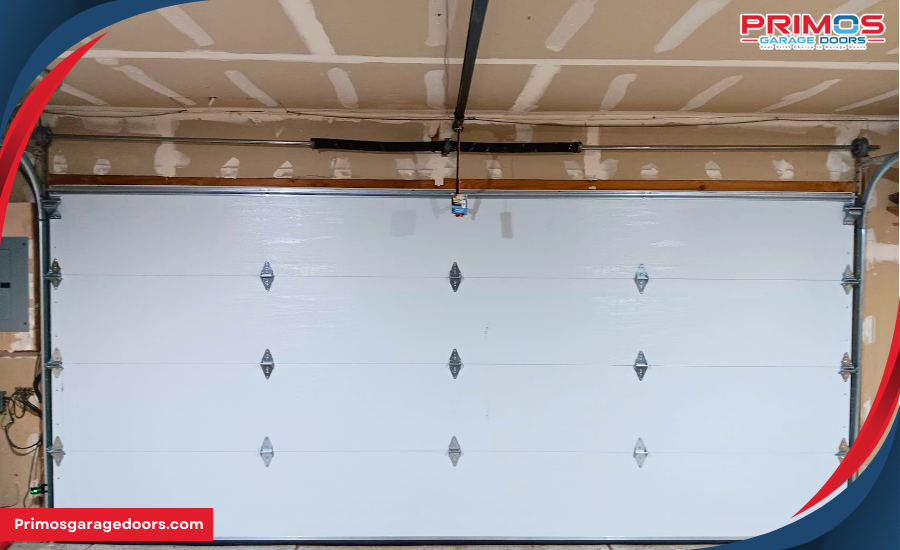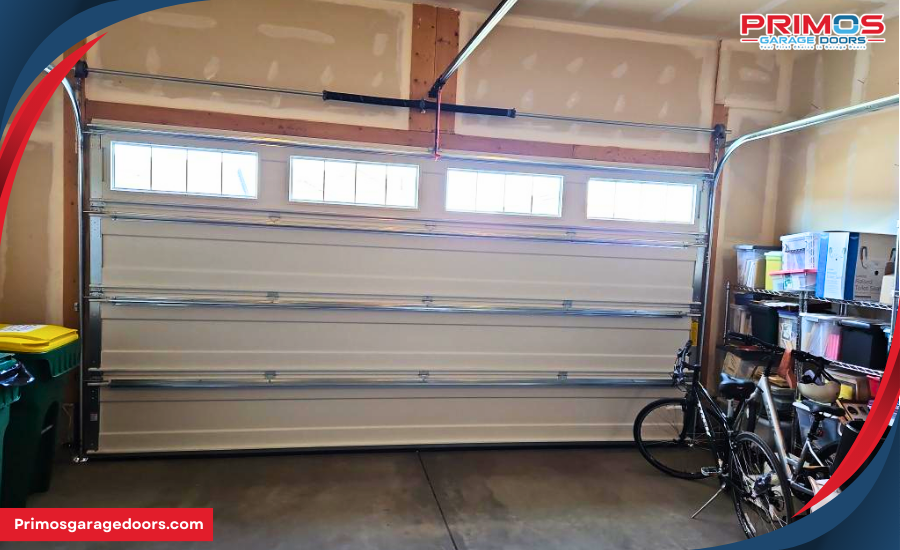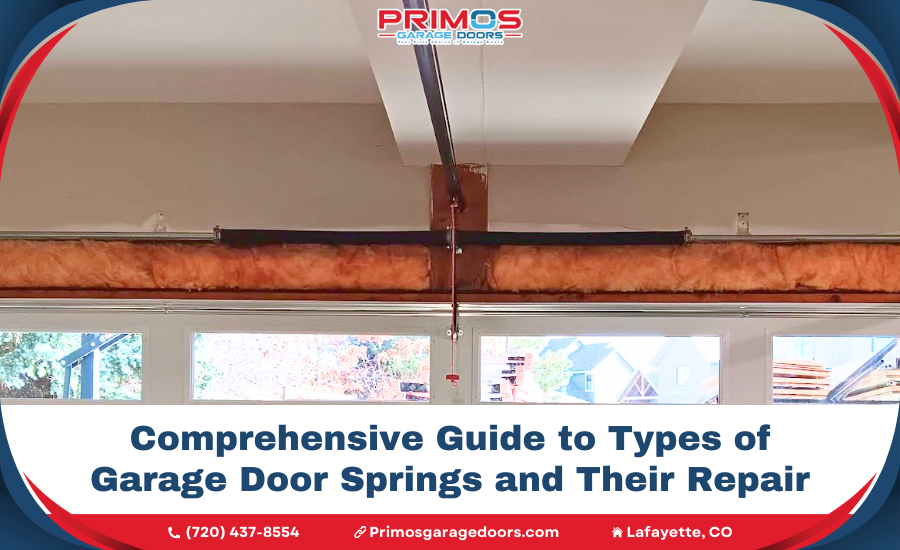Is your garage door refusing to open smoothly, or have you noticed a sudden loud noise upon operation? These signs might indicate a garage door springs repair is urgently needed. The health of your garage door’s springs is not just a convenience but a necessity for the safety and functionality of one of the largest moving parts in your home.
In this article, we dive deep into everything you need to know about garage door springs repair:
- Identifying the Problem: Learn how to spot early signs that your garage door springs are in need of repair.
- DIY Repair Guide: Get step-by-step instructions on how to safely replace or repair garage door springs at home.
- When to Call the Professionals: Understand when a repair job is beyond DIY efforts and requires professional intervention.
Garage door springs are integral to the operation of your garage door, and knowing how to maintain, repair, or replace them can save you from future hassles and unexpected failures.
Are you ready to ensure your garage door functions flawlessly year-round and safeguard your home effectively? Keep reading to gain valuable insights into maintaining your garage door’s integrity through proper spring care and management.

Tools Required for Garage Door Spring Repair
When tackling garage door spring repair, having the right tools on hand is crucial for both success and safety. This section will guide you through the essential tools and safety equipment needed, ensuring you are well-prepared before you start the repair process.
Basic Tools for DIY Repair
To effectively handle a garage door spring repair, you’ll need several specific tools. These are not only essential for the task but also help ensure the job is done efficiently and safely:
- Winding Bars: Absolutely necessary for adjusting the tension of garage door springs. Ensure you have a pair of sturdy, non-slip winding bars.
- Adjustable Wrenches: Used for loosening and tightening the nuts and bolts on the garage door mechanism.
- Socket Wrench Set: Provides a quicker and more consistent way to handle nuts and bolts of various sizes.
- Vise Grips: Essential for holding the door in place while you work on the springs.
- Clamps: To secure the garage door and prevent it from snapping up or falling down.
- Screwdrivers: Needed for various adjustments and for attaching components.
- Tape Measure: To accurately measure springs and other parts of the garage door.
- Level: To ensure the garage door is perfectly aligned during and after the repair.
Each tool plays a pivotal role in the repair process, and missing even one could complicate the task.
Safety Equipment
The repair of garage door springs can be hazardous. It is vital to equip yourself with the proper safety gear to prevent injuries. Here’s what you should have:
- Safety Goggles: Protect your eyes from any flying debris, especially while winding or unwinding springs.
- Work Gloves: Choose heavy-duty gloves that can protect your hands from sharp edges and the tension of the springs.
- Hard Hat: Although not always necessary, wearing a hard hat is a good precaution if you’re working under a fully tensioned spring.
- Sturdy Ladder: A stable ladder is crucial, as much of the work will be done above ground level.
- Non-Slip Shoes: Garage floors can be slick, and good traction is essential for safety.
Before starting your repair, organize all your tools and safety gear. This preparation not only makes the process smoother but also ensures that you can focus on the task without having to stop and search for tools.
By adequately preparing with the right tools and safety equipment, you can tackle garage door spring repair with confidence, minimizing the risk of errors and injuries. Remember, if at any point the task seems too daunting, professional help is just a call away. Always prioritize safety over convenience, especially in DIY projects involving significant risk.
Materials Required for Spring Repair
Having the right materials is just as important as having the right tools when it comes to garage door spring repair. This section will help you identify the necessary components and materials, ensuring that you purchase high-quality parts that will last.
Types of Springs and Where to Buy Them
The type of spring your garage door system uses will greatly influence your repair approach. There are primarily two types of springs:
- Torsion Springs: These are mounted above the garage door opening and use torque to lift the door. Torsion springs are suitable for heavier doors and provide better overall balance, making them the preferred choice for double garage doors.
- Extension Springs: These are located above the horizontal tracks on both sides of the door and extend when the door is moved. Extension springs are more common in lighter or single-car garage doors.
Where to Buy Garage Door Springs
- Local Hardware Stores: Often have a selection of the most common types of springs.
- Online Retailers: Websites like Amazon or specialty stores offer a wider range of options and often provide customer reviews.
- Direct from Manufacturers: Purchasing directly can ensure you get the best match for your system.
- Garage Door Repair Specialists: These professionals can provide specific brands and strengths tailored to your door’s requirements.
It is critical to choose springs that exactly match the specifications of your current system to maintain safety and functionality.
Additional Necessary Materials
In addition to the springs, several other materials are essential for a successful and smooth repair process. Here’s what you’ll need:
- Lubricants: Proper lubrication is crucial to ensure that the new springs and the garage door mechanism operate smoothly. Use a silicone-based lubricant or a light oil.
- Cables: Check if the existing cables are frayed or damaged and replace them if necessary. Cables are critical as they bear the weight of the door during operation.
- Rollers: Worn or noisy rollers can also be replaced during the spring repair to ensure smoother door operation.
- Brackets and Hinges: Inspect these for wear and replace if they show signs of stress or damage.
- Safety Cables for Extension Springs: If you are working with extension springs, installing safety cables is advised to prevent the spring from becoming a projectile in case of breakage.
When purchasing these materials, ensure you select high-quality products that are compatible with your garage door system. Quality materials not only last longer but also contribute to the safer and more reliable operation of your garage door.

Pre-Repair Considerations
Before you dive into the process of repairing your garage door springs, it’s essential to understand the role these components play, assess whether you’re capable of handling the repairs yourself, and evaluate the overall condition of your garage door. This groundwork ensures you approach the repair with all the necessary information, reducing the risk of complications.
What Does a Garage Door Tension Spring Do?
The garage door tension spring is crucial for balancing and supporting the weight of the garage door. In a typical setup, torsion springs are mounted above the garage door, and they use torque to lift and lower the door smoothly. Extension springs, located along the tracks on either side of the door, stretch and contract to achieve the same goal. These springs counteract the gravity pull on the door, making it light enough for manual operation or for the garage door opener to function efficiently.
Can You Repair a Garage Door Tension Spring Yourself?
Repairing a garage door tension spring involves significant risks and requires a specific skill set. Here are a few considerations:
- Skill Level: You should have a good understanding of mechanical systems and experience with similar DIY projects.
- Tools: Proper tools are necessary, as outlined in previous sections.
- Risks: The springs are under high tension and can cause serious injury if not handled correctly.
If you’re not confident in your ability to safely manage the repair, or if the job seems too complex, it’s wise to seek professional help. Attempting to repair without the requisite skills and tools can lead to injuries or further damage to the garage door system.
Assessing the Garage Door’s Condition
To decide whether a repair is feasible or if it’s time to call a professional, consider the following:
- Age of the Door: Older doors might need more than just spring repair; they could require a comprehensive overhaul or replacement.
- Extent of Damage: Look for signs of wear or damage not just on the springs, but also on the cables, rollers, and the door itself.
- Performance Issues: If the door has been noisy or unsteady, the problem might extend beyond the springs.
It’s crucial to conduct a thorough inspection of the entire garage door mechanism. If the system has multiple issues or if the spring has broken in a way that affects other components, professional repair services will not only be safer but more cost-effective in the long run.
Detailed DIY Repair Instructions
Embarking on a DIY repair of your garage door springs can be a daunting task, but with the right guidance and strict adherence to safety measures, you can successfully complete the job. This section will walk you through each step of the repair process, from initial safety precautions to the final adjustments and testing.
Safety Precautions
Safety is paramount when dealing with garage door springs due to the high tension they are under. Here’s how to prepare:
- Disconnect Power: Ensure the power to the garage door opener is disconnected to prevent any accidental operation.
- Secure the Door: Use C-clamps or locking pliers under the bottom rollers to prevent the door from unexpectedly rolling up or down.
- Wear Protective Gear: Always wear safety goggles and heavy-duty gloves to protect against flying fragments or sharp edges.
These precautions are essential to prevent injuries and should never be skipped.
Removing the Broken Spring
Removing a damaged garage door spring requires patience and attention to detail:
- Release Tension: If it’s a torsion spring, unwind it carefully using winding bars. For extension springs, ensure the door is open so the springs are relaxed before unhooking them.
- Detach Springs: Unbolt the springs from the center bracket and then detach them from the cable drums and pulleys.
Be cautious and deliberate during this step to avoid letting the springs snap back.
Installing the New Spring
Installing new springs involves several critical steps to ensure they function correctly:
- Attach New Springs: Start by securing the new springs to the center bracket and then connect them to the cable drums and pulleys.
- Ensure Alignment: Confirm that the springs are properly aligned and balanced. For torsion springs, this may involve making sure they have the right amount of tension for smooth operation.
Proper installation is crucial for the longevity and functionality of your garage door.
Final Adjustments and Testing
Once the new springs are in place, meticulous adjustments and testing are necessary:
- Adjust Tension: For torsion springs, apply tension by winding the spring with the winding bars. The number of turns will depend on the height of the door and the size of the spring.
- Check Balance: Raise and lower the door manually to check for smooth operation and balance. Adjust as necessary.
- Reconnect Opener: Once everything is balanced, reconnect the garage door opener and test the automatic operation.
This final step ensures that your garage door operates safely and efficiently after the repair.

When to Call a Professional
While many homeowners are adept at tackling various DIY projects, garage door spring repair can sometimes escalate beyond basic DIY capabilities. Recognizing when to call in a professional can save you both time and potential risk, ensuring your garage door is repaired efficiently and safely.
Limitations of DIY Spring Repair
Even with detailed instructions and the right tools, there are situations where attempting to repair garage door springs yourself might not be advisable:
- Complexity of the Repair: If the repair process involves more than just replacing a spring, such as adjusting the garage door’s alignment or dealing with an unusual spring system, professional skills might be required.
- Risk of Injury: Garage door springs are under tremendous tension, and mistakes can lead to serious injury. If you have any hesitation about your ability to safely manage the tension, it’s better to defer to an expert.
- Lack of Proper Tools: Some repairs might require specialized tools that are not typically found in a homeowner’s toolbox. Without these tools, you risk doing a poor job or damaging the door further.
These scenarios highlight the importance of assessing your own limits and recognizing when the job is too complex or dangerous to handle on your own.
Benefits of Hiring a Professional
Choosing to hire a professional garage door technician comes with several significant advantages:
- Expertise: Professionals have the training and experience to diagnose problems quickly and accurately, which is essential for effective repairs. They understand the nuances of different garage door systems and can provide solutions that might not be apparent to the average homeowner.
- Guarantee: Most professional repairs come with a service guarantee, ensuring that if something goes wrong with the repair, you’re covered. This is not something you can secure when doing it yourself.
- Peace of Mind: Knowing that your garage door has been repaired correctly and safely can give you a sense of security. Professionals ensure that all safety protocols are followed, reducing the risk of future malfunctions.
In conclusion, while DIY projects can be rewarding, certain tasks, like garage door spring repair, often warrant professional attention. If you encounter a complex issue, are unsure of the repair process, or simply want the assurance that the job is done right, calling a professional is the best course of action. This not only ensures a high-quality repair but also preserves the integrity of your garage door system and your personal safety.
Secure Your Home with Professional Garage Door Spring Repair
Opting for professional garage door spring repair is not just about fixing a problem; it’s about ensuring your home remains safe and secure. Garage doors play a crucial role in home security and functionality, and any malfunction can compromise not only the safety of your possessions but also that of your family.
When you choose professional repair services, you’re investing in reliability and durability. Technicians who specialize in garage door repairs bring a level of expertise that goes beyond mere replacements. They perform comprehensive assessments to ensure every component of your garage door system is functioning correctly and safely. This preventative approach helps avoid future breakdowns, ensuring your garage door continues to operate smoothly and securely.
Furthermore, professionals are equipped to handle the repair quickly and efficiently. This speed means your garage door is out of commission for less time, restoring your home’s security swiftly. They also have access to high-quality materials and parts, often backed by warranties that provide additional peace of mind.
Lastly, the cost of professional services often includes detailed inspections and fine-tuning other parts of the door mechanism, which might be overlooked during a DIY repair. This thorough service can extend the life of your garage door, making it a cost-effective solution in the long run.
In essence, professional garage door spring repair in Lafayette, CO is an investment in your home’s security and functionality. It ensures that one of the largest moving parts of your home remains reliable and safe, providing peace of mind that is well worth the expense.

Frequently Asked Questions
How long do garage door springs typically last?
Garage door springs are crucial for the proper functioning of your garage door, but they don’t last forever. On average, garage door springs are designed to withstand about 10,000 open/close cycles, which for many homeowners translates to approximately 7 to 12 years depending on usage patterns. The lifespan of a garage door spring can be affected by factors such as the spring type (torsion springs generally last longer than extension springs), the quality of the spring, the level of maintenance, and how frequently the garage door is used. Regular maintenance can help extend the life of your springs, including lubricating the springs annually and checking for rust or wear. If your garage door is used more frequently, such as more than four times a day, you might consider getting high-cycle springs that are designed to last longer.
Can I replace garage door springs on my own?
Replacing garage door springs can be done on your own if you have the necessary tools, mechanical knowledge, and you follow strict safety guidelines. However, it’s important to understand that this task involves significant risks due to the high tension under which these springs operate. If not handled correctly, it can lead to personal injury or property damage. Beginners or those not confident in their DIY skills should definitely consider hiring a professional. If you choose to proceed on your own, make sure to purchase the correct type of springs for your door and follow a detailed tutorial to ensure safety throughout the process.
What are the risks of repairing garage door springs myself?
DIY garage door spring repair poses several risks, primarily due to the high tension the springs are under. The main hazards include potential physical injury from springs snapping or tools slipping, and the possibility of doing incorrect installations that could result in operational failures, which might cause further damages or injuries later on. Common injuries in DIY spring repair include bruises, cuts, and in severe cases, broken bones or head injuries. Always wear protective gear and use the proper tools. If you’re not completely comfortable with your ability to safely handle the repair, professional service is strongly advised.
How much does it typically cost to repair garage door springs?
The cost to repair garage door springs varies depending on the type of spring system you have and your location. Generally, replacing garage door springs can cost between $100 and $300, with most homeowners spending around $200. This price includes the cost of the springs, which can range from $30 to $100 each, and labor costs, which can vary widely depending on the professional you choose and the complexity of the job. Some additional costs may apply if there is a need to replace cables or re-balance the door, which are sometimes required to ensure the door operates smoothly.
How often should garage door springs be replaced?
The frequency of garage door spring replacement depends on the quality of the springs and how often the garage door is used. As a rule of thumb, standard garage door springs, which support around 10,000 open/close cycles, might need replacement every 7 to 12 years. However, if your garage sees high traffic and frequent use, you might need to replace the springs more often. It’s good practice to inspect your garage door mechanisms annually for signs of wear and tear. This not only helps in spotting when the springs need replacing but can also prevent unexpected failures and accidents.


